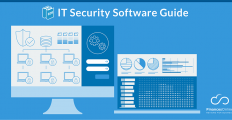
Credit: louisehoffmann83
In the current standoff between United States employers and employees over the workforce returning to the office, the bosses appear to have recently gained the upper hand. A survey by Kastle Systems shows that the office occupancy rate across 10 major metropolitan zones in the country reached 52.6% post-Labor Day, up from only 35.4% in 2021. The access control system provider also found that 47.5% of those working in the office prior to the COVID-19 pandemic returned from September 4 to September 8.
The high numbers imply that the return-to-office mandates of employers have been working thus far. With the threat of COVID decreasing and President Biden declaring “the pandemic is over,” offices are emboldened to bring back their workforce to their cubicles. Some companies have asked for full-time returns while others have either reverted to or pushed for more office days in hybrid work arrangements.
Kastle discovered that the Tuesday and Wednesday after Labor Day had the highest volume of returns, with an office occupancy rate of 55%. Besides the insistence of employers, added incentives like catered meals and office luncheons were applied on the said dates to attract employees to return to the office.
Based on recent remote work and telecommuting statistics, millennials make up a good chunk of those who returned to the office. There was a spike in the number of people who belong to this age group riding the morning train. In addition, only 43% of millennials have been working more at home than in the office in September so far.
However, having more employees in the office does not mean that the days of remote working arrangements are numbered. In fact, hybrid work remains a popular option for most.
Employees Have Leverage
Today’s office occupancy rates are only around half of the targeted 100% by some companies, and the gap won’t likely be closed soon. This underscores the leverage employees carry over the companies they work for as job-related phenomena like the Great Resignation and quiet quitting have boosted their voice and value. The same goes for numerous opportunities presented by the country’s strong job market.
As such, WFH Research revealed that many companies have slightly raised the number of days employees can work from home from 2.1 days in January to 2.4 in July. This means that while more people are returning to the office on some days, more are working from home on others.
With US inflation remaining high at 8.26% as of August, employees will continue to resist work-from-home mandates, a fact that many employers overlook. Even though the price index of gasoline dropped by 10.6% in August, the prices of food, shelter, and healthcare have risen. Food now costs 11.4% higher than what the index was a year ago. Meanwhile, the average hourly earnings of US employees increased by 0.2% last month but decreased by 2.4% year-over-year.
The need to earn will remain one of the biggest driving forces behind resignations, and hybrid work happens to be a more cost-effective option than in-office work. This will continue to be an issue in the professional realm as some bosses remain obsessed with in-office work even though the numbers suggest that remote work improves productivity. Employers might have the upper hand now given the increased office occupancy rates but this could turn at a drop of a hat. It probably will if high inflation persists.





















Leave a comment!